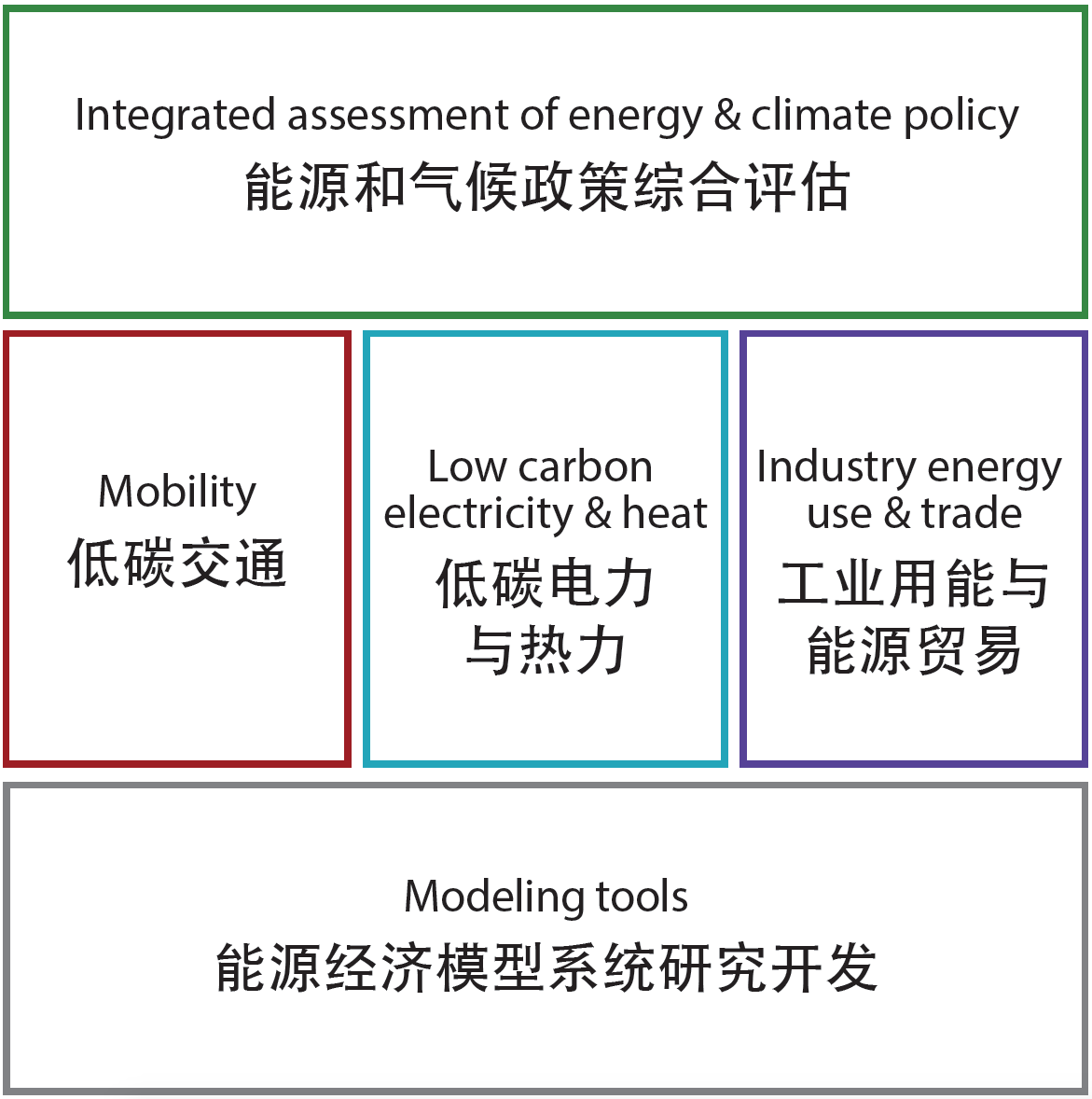Focus Areas:
- Policy Scenarios
- Climate Policy
- Regional Analysis
The Tsinghua-MIT China Energy and Climate Project (CECP) is focused on studying energy and climate change governance in China. A research alliance between the MIT Joint Program and the Institute for Energy, Environment and Economy at Tsinghua University in Beijing, China, it was officially launched in October 2011.
The objective of the CECP is to expand and improve the facilities for analysis of the Chinese energy economy and emissions, and to apply this capability to studies of alternative future pathways of economic development, energy use and emissions mitigation. The primary goal is to analyze the impact of existing and proposed energy and climate policies in China on technology, inter-fuel competition, the environment, and economic welfare by applying, and where necessary developing, both quantitative and qualitative analysis tools. The project will pursue three complementary research themes focused on understanding: the drivers of micro-level energy-related decisions by households and firms; the technical and market potential for advanced energy-related technologies; and, macro-level policy analysis.
In pursuit of this objective, the CECP has developed and applied national and regional energy-economic models of China, which were based on the Joint Program’s Economic Projection and Policy Analysis (EPPA) model. Researchers analyzed the impact of existing and proposed energy and climate policies in China on technology, energy use, the environment and economic welfare. The project informed rigorous, transparent analysis of climate and energy policy options in China, and their global implications.
CECP celebrated its five-year anniversary in May 2016. Building on a strong foundation, CECP researchers continue to engage in joint work to inform the management of energy, the local environment, and climate change, focusing on China in a global context.
Modeling Tools
The CECP team provided a strong foundation for future policy assessment by developing two new global general equilibrium energy-economic modeling tools: the China-in-Global Energy Model (C-GEM) and the China Regional Energy Model (C-REM). These models represent the latest available data and insights from research in China, and provide a trusted platform for policy analysis in China and abroad. Both models are global, but they represent China with various levels and elements of detail. Model development focused mainly on capturing specific features of China’s economy, such as managed electricity pricing and the evolution of demographic and consumption trends, using available empirical data.
Integrated Assessment of Energy and Climate Policies
The CECP team assessed a variety of economy-wide energy and climate policy proposals in China, focusing on the design and impact of a future emissions trading system. Studies in this area also assessed the co-benefits of policy proposals for non-targeted environmental and human health impacts—for example, by affecting emissions or precursor pollutants, as well as broader impacts on primary fuel demand at the national and regional level. These integrated assessments rely on the use of the C-GEM and C-REM models developed by the group to represent technology detail and how it may respond under changing market or policy conditions.
Mobility
An early goal of the CECP team was to characterize transport system detail at the regional level and incorporate it into the regional energy model, C-REM. Then, the team utilized C-REM to better understand key uncertainties of future transportation energy demand and its associated environmental impacts. China’s historic and future urbanization patterns were also a concern in this area, and research was conducted on China’s city-size distribution. Analysis of China’s regional transport system included empirical studies of the relationship between energy use and other factors such as demographics, income, land use, availability and cost of alternatives to vehicle ownership, and local policy initiatives.
Low Carbon Energy and Heat
When China adopted aggressive targets for increasing the contribution of low carbon energy sources, the CECP team developed extensive detail in the power sectors of C-GEM and C-REM, and implemented a detailed power systems model to capture temporal and spatial dynamics of power system operation. These models were then applied to assess policy options that bear directly on the contribution of low and zero carbon energy to the power system—including onshore and offshore wind, solar, biomass, nuclear, coal with carbon capture and storage, and natural gas—and the ways that introducing these options at scale will interact with the existing generation mix.
Industry Energy Use and Trade
Industry accounts for the largest share of China’s energy use, so for the CECP team, finding ways to save energy and reduce carbon in industry was essential. The CECP team studied the opportunities and incentives to undertake reductions at the level of firms and sectors, focusing on the impact of policies targeting energy-intensive trade on total carbon emissions, with studies capturing both direct and indirect response. Other studies focused on better representing options for retrofitting existing industrial facilities to capture and store carbon, or to switch from coal to lower carbon fuels.








